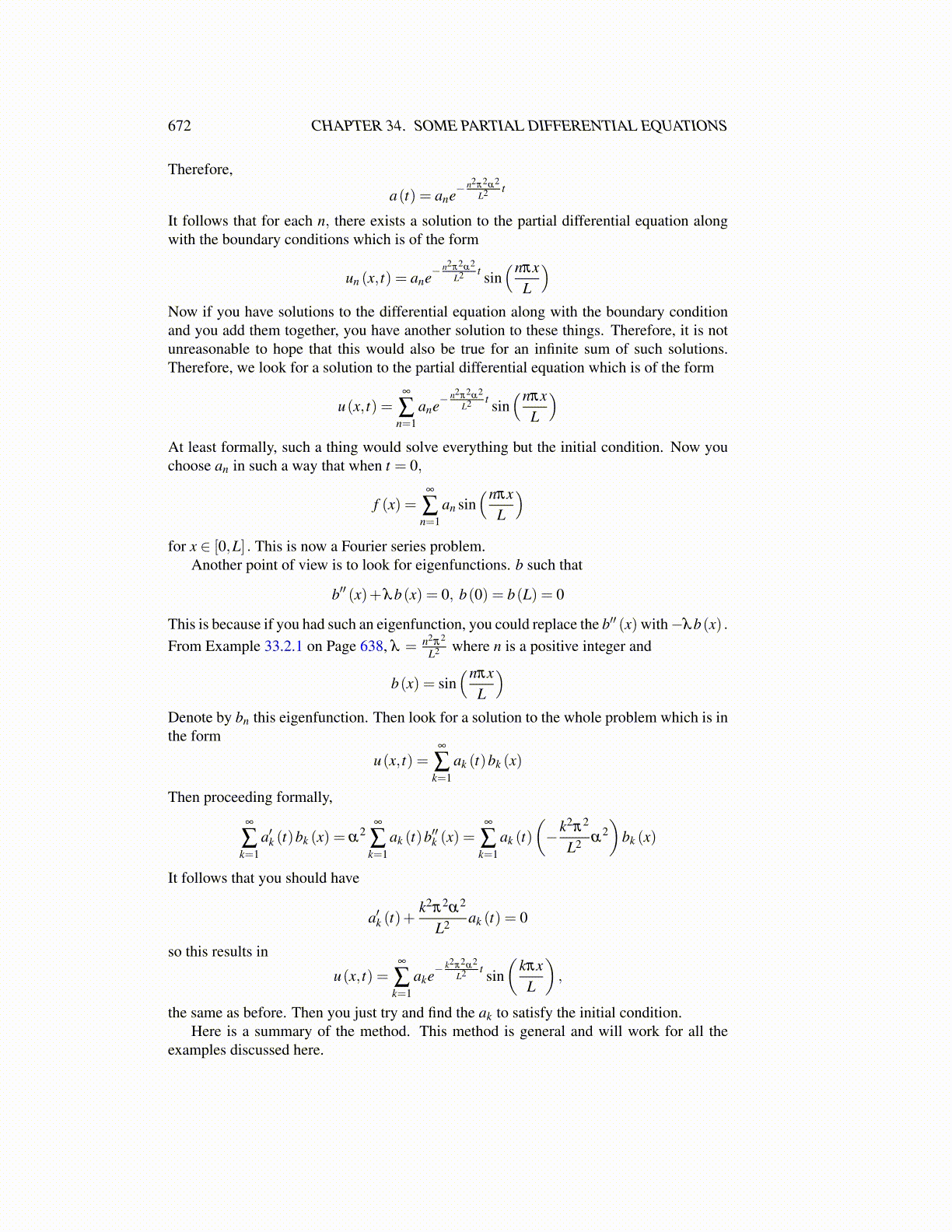
672 CHAPTER 34. SOME PARTIAL DIFFERENTIAL EQUATIONS
Therefore,
a(t) = ane−n2π2α2
L2 t
It follows that for each n, there exists a solution to the partial differential equation alongwith the boundary conditions which is of the form
un (x, t) = ane−n2π2α2
L2 t sin(nπx
L
)Now if you have solutions to the differential equation along with the boundary conditionand you add them together, you have another solution to these things. Therefore, it is notunreasonable to hope that this would also be true for an infinite sum of such solutions.Therefore, we look for a solution to the partial differential equation which is of the form
u(x, t) =∞
∑n=1
ane−n2π2α2
L2 t sin(nπx
L
)At least formally, such a thing would solve everything but the initial condition. Now youchoose an in such a way that when t = 0,
f (x) =∞
∑n=1
an sin(nπx
L
)for x ∈ [0,L] . This is now a Fourier series problem.
Another point of view is to look for eigenfunctions. b such that
b′′ (x)+λb(x) = 0, b(0) = b(L) = 0
This is because if you had such an eigenfunction, you could replace the b′′ (x) with−λb(x) .From Example 33.2.1 on Page 638, λ = n2π2
L2 where n is a positive integer and
b(x) = sin(nπx
L
)Denote by bn this eigenfunction. Then look for a solution to the whole problem which is inthe form
u(x, t) =∞
∑k=1
ak (t)bk (x)
Then proceeding formally,∞
∑k=1
a′k (t)bk (x) = α2
∞
∑k=1
ak (t)b′′k (x) =∞
∑k=1
ak (t)(−k2π2
L2 α2)
bk (x)
It follows that you should have
a′k (t)+k2π2α2
L2 ak (t) = 0
so this results in
u(x, t) =∞
∑k=1
ake−k2π2α2
L2 t sin(
kπxL
),
the same as before. Then you just try and find the ak to satisfy the initial condition.Here is a summary of the method. This method is general and will work for all the
examples discussed here.